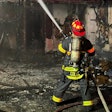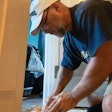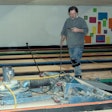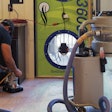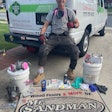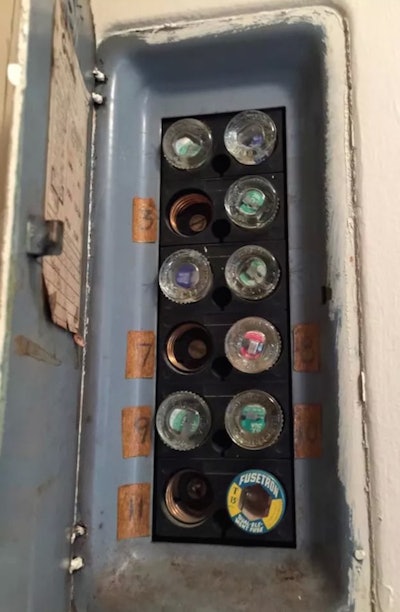
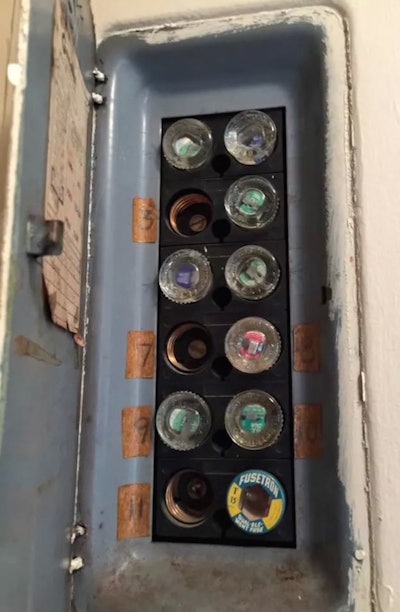
The photo at right is from a friend’s job, but it brought me back to how we hooked up power, and I felt the need to share.
How do you tap into a box with no breakers? Well, first you need to know that if you have a panel like this the wires will be old and the insulation will be thin. Make sure you fully understand how to hook up. If you don’t (or if it isn’t legal where you live), then pay an electrician.
Here is what we did on this job. I made up a box with breakers, this would give us the comfort of knowing that we are safe and the house would not melt down. Understand that if we tap into the main box, we get 80-100 amp service. Not trusting the plugs and outlets from an “old” house, this was the only way to make sure I felt safe. We could also run two 220-volt units at the same time. Hardwood Floors wrote an article I helped with some time back about safe hook-up, you can click on it here.
I feel good about the 110-volt not blowing the fuse/breakers with the direct hookup, and I know we have power to do the complete job. The compressor will trip the round fuse, the start-up will spike the fuse and blow it. The drop saw, table saw and hand tools needed to do the install were not my main concern. It came down to the sanders; the dust control systems were the big fuse blowers. Our vacuum pulled 19 amps, and on the old wires it seemed to be a load on the fuse box. By hooking up my box, we had a direct line to the main lines, and knowing how many amps we had feeding the box made life easy. If the big machine is pulling 16 amps and the vacuum pulling 19 amps, this way with a 100-amp feed we were using only 35 amps from the 100-amp service. We still could run the edger at 9-10 amps. Now we are up to 40-45 amps being used. The wires are large enough to handle the amps, the machines are on breakers and our body is safe with the breaker box in line with power supply.

We had two power boosters in a low-voltage area, one for the vacuum and one for the big machine. We can run the edger and one big machine on one booster. 16 amps (big machine) + 9 amps (edger) = 25 amps. Start to understand the need to know what each units pulls? With the in-line breaker box, you could do the total job and not touch the home’s outlets.
Now this is the most important part, DO NOT USE CLIP ON LEADS! How many of us use the big quick clamps to get power? They are not going to hold up to the demand over time,, and it is only a matter of time that one will slip off and short the box. The amps flowing through the quick clip is far more than they are made to handle. OSHA does not approve of any quick clip that I know off, it must be a clamp or bolt tight clamp. So please if you are doing this today, rethink it. Think “what if”—before you or a home you’re working on gets melted down.
The other way is to drop in a 50-amp stove plug and plug the box into that; this way you’re safe and you do not have to worry about blowing the fuse. If the box trips the breaker, you know you have a short, low voltage or not enough amps coming to the home. Just an FYI, if you cannot get enough power or have no power, you can run the units on a generator. The key is to get one with enough power to run them without killing the motor. The quick math is for every HP you need 750 watts x 2. So, our big machine is a 6-HP unit: 750 watts x 6 HP = 4,500 x 2 = 9,000. That is the smallest generator you can run the unit on, and that is just the big machine. If you want to add on the big vacuum, then you have got to factor that in—that is now a 12,000-watt unit.
Overall, just be smart when it comes to power for the tools. It can do great harm or be a deadly mistake. Thank God we never had anyone hurt by the power supply. We keep breakers in line with the tools and our body. When you quick-clip in, you have no protection for the home, the tools or your body.




















